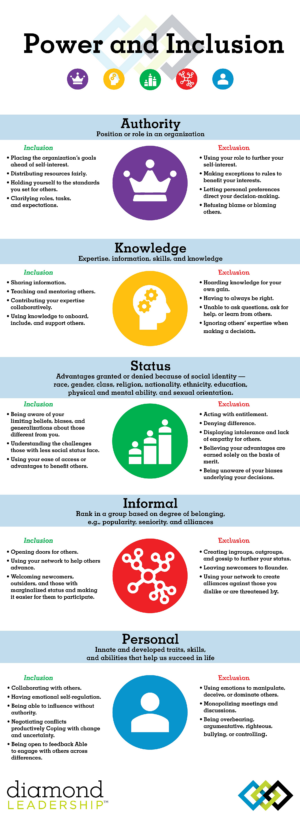
By Litzy Baeza
In order to move towards equity, it is important to take note of power in an organization.
Part of moving towards an anti-oppression framework and advancing equity within the workplace is understanding the existent power dynamics. When people have fewer advantages and opportunities than others, due to their identities, they are less able to impact and influence others; they have less power relative to others.
Let’s define power. According to Lily Zheng, from their book DEI Deconstructed, they define power as ‘the potential to influence, is the possession of control, authority or influence over others. The control of people and events’ (Zheng, p. 113). When we talk about power in equity, we are talking about the right to be seen, heard, and valued for your perspectives and opinions. When viewed like this, power is a good thing. However, the disproportionate distribution of power and the exploitative or coercive use of power is where power becomes an oppressive force.
We all have a certain amount of power to enact change. A lot of times we conceptualize power as a hierarchy, someone above us and with that image in our minds we focus on the power we don’t have. But there are many different types of power and when we understand this, we can use that power in the workplace to make systemic change.
Let’s dive deeper.
Julie Diamond, author of ‘Power: A User’s Guide’ has come up with the following ways to categorize power:
- Knowledge: power based on skill, expertise, depth of information, experience, and understanding.
- Authority: legal power of a role or position.
- Status: power based on social identity, societal position, and access to resources.
- Personal Power: power based on personality characteristics, skills, and abilities, what we use to persuade, influence, make an impact, and get along in the world.
- Informal Power: power based on the ability to leverage norms and values of a given context, for instance popularity, seniority, and degree of belonging.
Anyone can enact change and use your power and (privilege) to be an effective ally. Think of a procedure, process or system in your workplace. Which categories of power from above are present in your organization? How will you utilize your power to eliminate inequities that may exist?
On May 25th, 2023, the Equity and Inclusion team will host a Community of Practice focused on power, power dynamics and power mapping. Sign up at the following link: tps://bcca.coop/events/#!event/2023/5/25/jeddi-in-co-ops-community-of-practice
1 Diamond Leadership. (n.d). The Role of Power in Creating Inclusive Workplace Cultures. (PDF). https://diamondleadership.com/wp-content/uploads/2019/10/DiamondLeadership_WhitePaper_RoleOfPowerInCreatingInclusiveWorkspaceCultures_Final.pdf